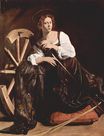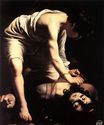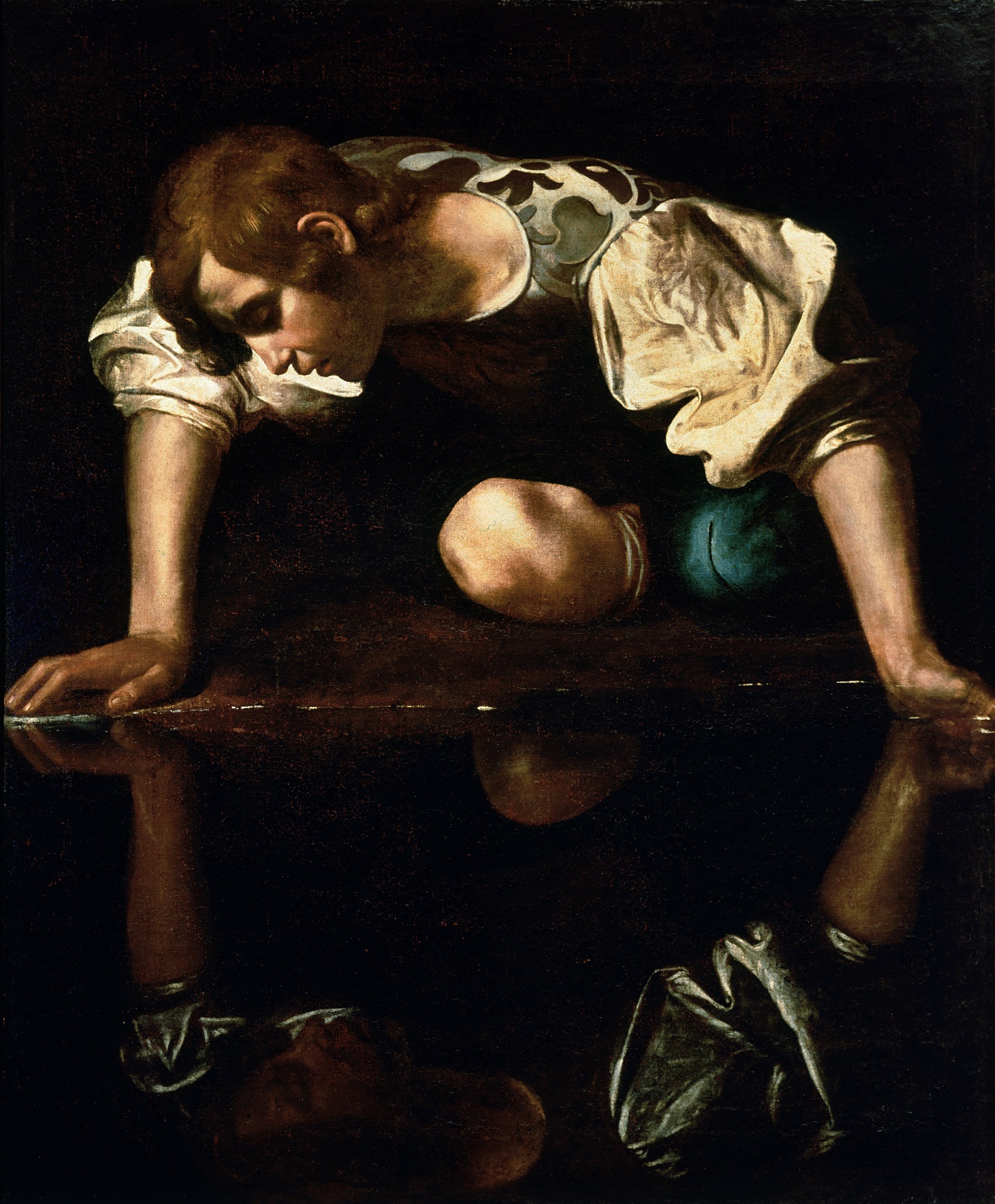Caravaggio - Narcissus 1599
 |
 |
 |
 |
 |
 |
 |

Narcissus 1599
110x92cm oil/canvas
National Gallery of Ancient Art, Rome, Italy
The image is only being used for informational and educational purposes
<< Previous G a l l e r y Next >>
From Wikipedia, the free encyclopedia:
The story of Narcissus was often referenced or retold in literature, for example, by Dante (Paradiso 3.18-19) and Petrarch (Canzoniere 45-46). The story was well known in the circles of such collectors in which Caravaggio was moving in this period, such as those of Cardinal Francesco Maria del Monte and the banker Vincenzo Giustiniani. Caravaggio's friend, the poet Giambattista Marino, wrote a description of Narcissus.
The story of Narcissus was particularly appealing to artists according to the Renaissance theorist Leon Battista Alberti: "the inventor of painting ... was Narcissus ... What is painting but the act of embracing by means of art the surface of the pool?"
Caravaggio painted an adolescent page wearing an elegant brocade doublet, leaning with both hands over the water, as he gazes at this own distorted reflection. The painting conveys an air of brooding melancholy: the figure of Narcissus is locked in a circle with his reflection, surrounded by darkness, so that the only reality is inside this self-regarding loop. The 16th century literary critic Tommaso Stigliani (it) explained the contemporary thinking that the myth of Narcissus "clearly demonstrates the unhappy end of those who love their things too much.